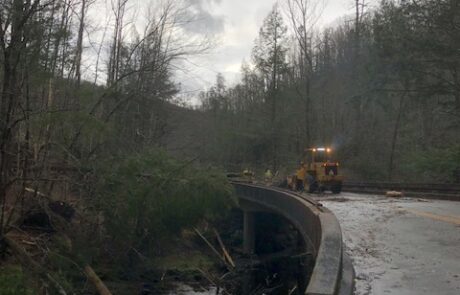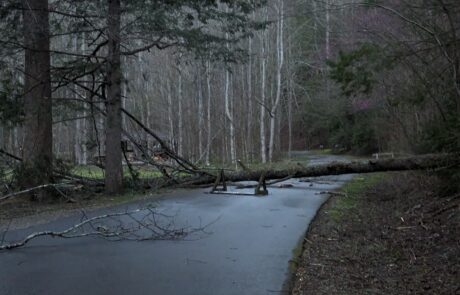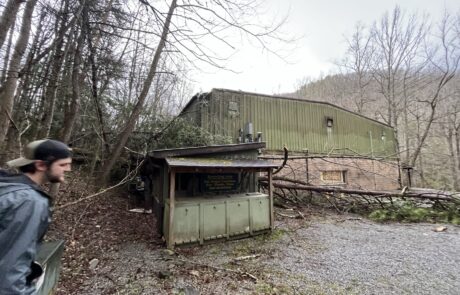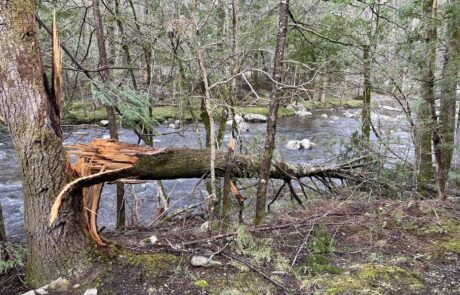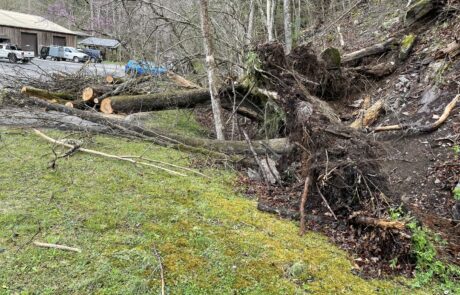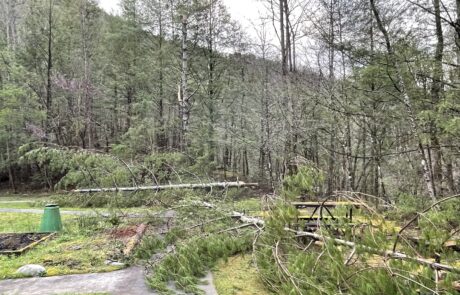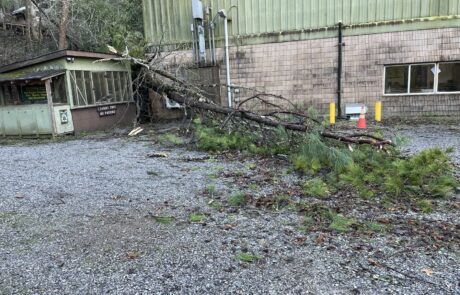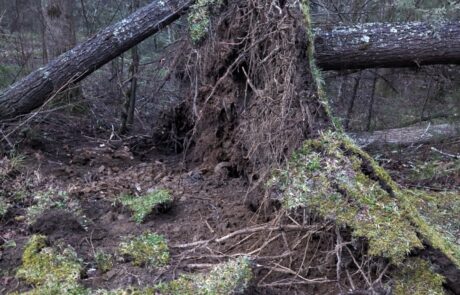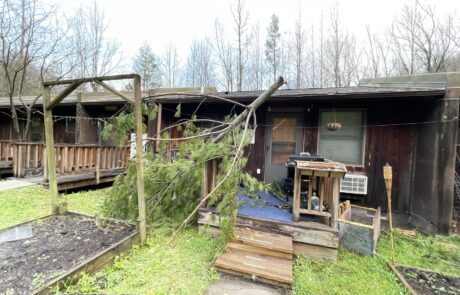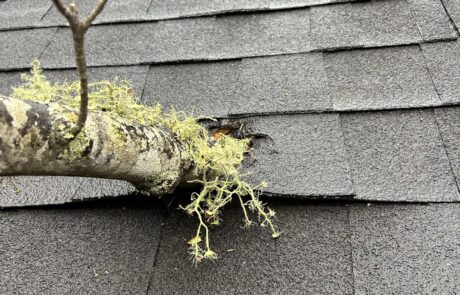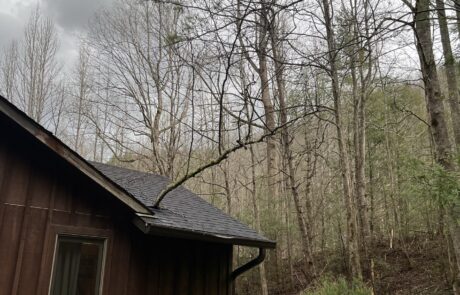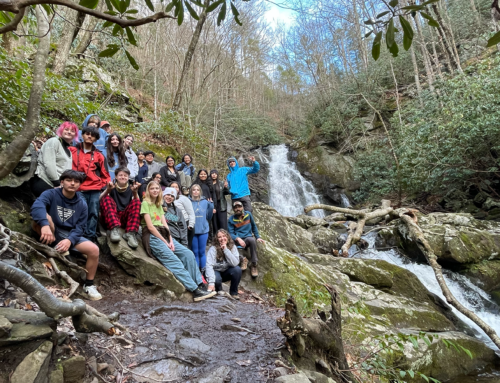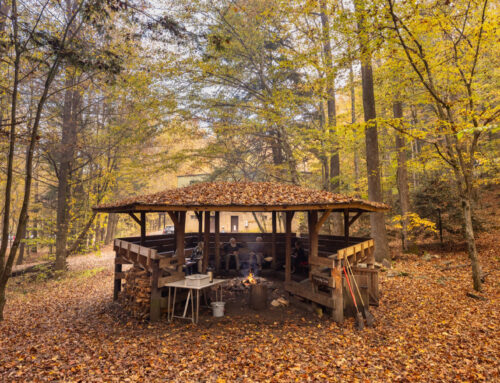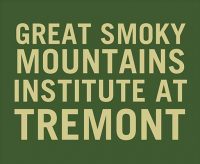Written by Jeremy Lloyd, Manager of Field and College Programs
The wind roars all night, telling me what I should have expected by 6:50 the next morning when education director John DiDiego telephones with news that Tremont Road is closed due to storm damage.
No problem. This has happened before. The world—well, life at Tremont at any rate— doesn’t stop just because trees are blocking the road. I’ll just park at the Townsend Wye and walk the two road-miles to campus.
In fact, I make it farther than expected by car, until I find a National Park Service maintenance crew attempting to clear a bridge covered with debris partway up Tremont Road. The damage is so severe, and the work so extensive, that the crew will not complete their task until the following day. There is no way to tell at such times how severe the damage may be. The crew must simply cut and bulldoze their way up the road, through one blowdown after another, until egress has been reestablished. And then they must return to each hotspot to remove debris littering the road and fully widen the corridor. It can take an hour or all day.
Or longer than a day.
One thing I can tell you: in the twenty-five years I’ve worked at Tremont, I’ve never seen such damage along Tremont Road. “It’s the worst in the park,” a ranger would tell me.
Forced to turn my car around, I stop by the Oasis (staff quarters) and find its three occupants either asleep or gone. A tree is blocking their driveway, and a short time later I learn they walked the one-and-a-half miles to campus, climbing through the mess on the bridge and past more than a dozen other downed trees, ahead of the road crew.
Back home in Walland I check email, make phone calls, and wait for the road crew to forge a path for vehicles. Once that’s done several hours later, I return to the park and finally make it to campus. All sorts of things have been happening behind the scenes in the meantime: Assistant kitchen manager Josh Swann makes breakfast for students from the University of Montevallo who are spending the week at Tremont. Teacher Naturalist Alexis Jacobs consults with the professor since our planned activity—a hike and discussion about wilderness values—has been canceled. Other Teacher Naturalists and staff, all of whom live on site, survey the damage around campus, discovering that two buildings were affected.
A corner of the brand-new roof on the Activity Center was struck when several trees came down and wiped out the back porch connecting the recycling shed to the rest of the building.
The other bit of damage was observed firsthand while Teacher Naturalist Casey Zazzaro was lying in bed and heard a tree limb impale his bedroom ceiling and the roof above it.
Staff also search for stranded hikers on Upper Tremont Road. They remove trees from driveways in the pouring rain. They shuttle hikers to the park entrance. They pick up limbs and look for hazard trees hung up over walkways and around buildings. Safety is a must at such times, and clear and effective communication is vital.
Photos from Lumbar Ridge (left) and the West Prong (right) trails.
Plenty more work lies ahead. Tremont maintains several “teaching” trails in the park, many of which received damage. We’re inventorying the damage and beginning to clear them right now in anticipation of a large school group scheduled to arrive next week (another smaller school is already here). It’s likely that some of these trails won’t be cleared for weeks if not months.



